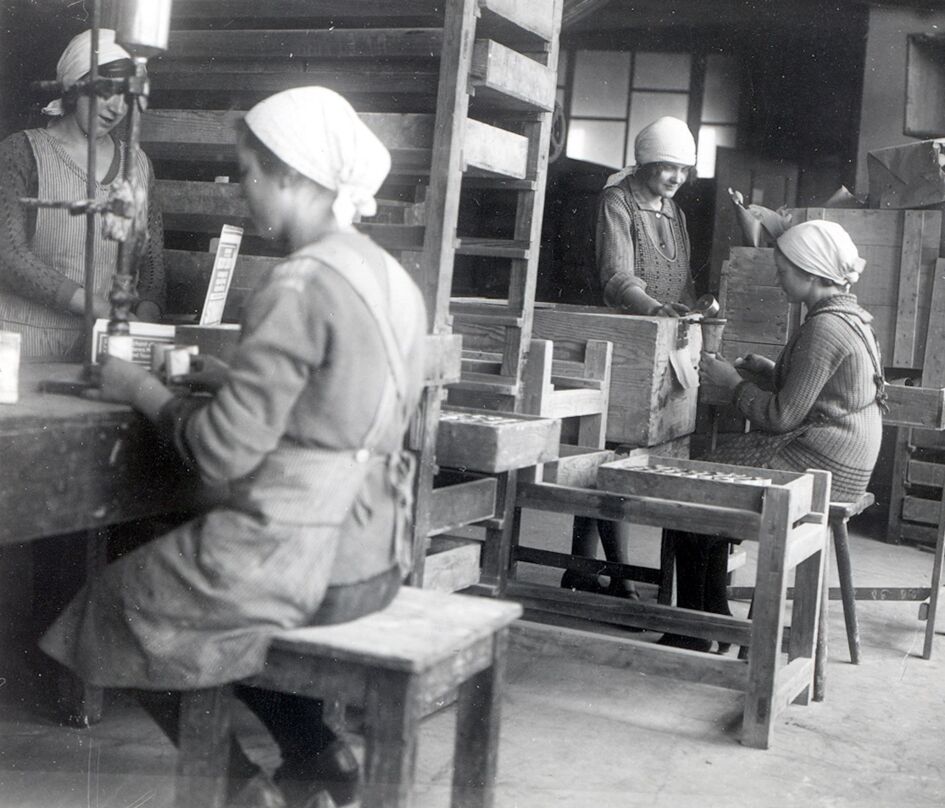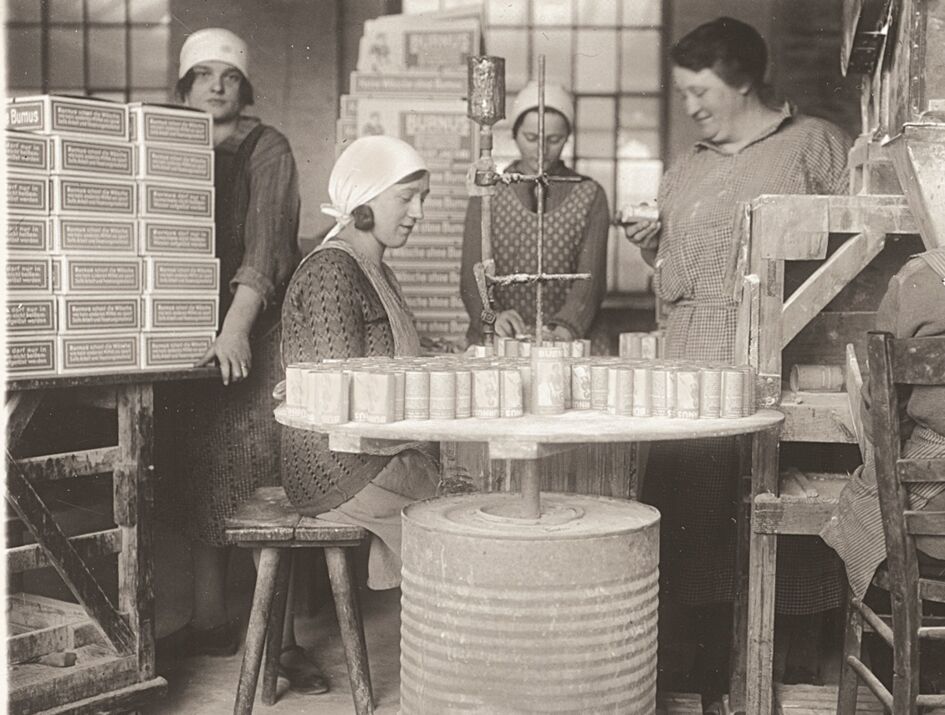The enzyme-based dirt remover
BURNUS®

After Dr. Otto Röhm had become successful with his enzyme-based leather stain, his research led him into the field of laundry washing. Presumably, Swabian butchers gave him the idea of using enzymes for laundry cleaning, because, as Röhm observed, they washed their bloody laundry in water with the addition of pancreases. The result of his research was given the name BURNUS® (derived from the white of the hooded coat of the North African Bedouins) and was introduced to the market in 1914.
During the development of BURNUS®, Dr. Otto Röhm carried out intensive investigations into the composition of the dirt in the laundry. He was actively supported by his wife Elisabeth, who determined the appropriate technique for soaking laundry with BURNUS® in numerous experiments.
For the first time, protein-decomposing enzymes―obtained from animal pancreas―were used in BURNUS®. These removed the protein-bound dirt from the laundry before the egg white burned into the laundry due to high washing temperatures and could only be removed from the textiles with the help of a lot of soap and massive mechanical action. In this respect, BURNUS® was not a detergent in the conventional sense, but an enzymatic soaking agent, the use of which preceded the actual washing process. The laundry was soaked in BURNUS® for a few hours and then washed clean with a little soap and protecting both the fibers and the washerwoman's strength.
Despite the high quality of the product, the distribution of BURNUS® initially placed unusual demands on the company. After all, consumers expected a product that would make it easier for them to wash their clothes to be foaming and sold in large boxes. Neither of these factors applied to BURNUS® and therefore initially led to mistrust and reluctance on the part of potential customers. Only the shortage of fats or soap and fuel in times of war and crisis influenced the purchasing behavior of consumers in favor of the product. With the help of BURNUS®, a large part of the dirt could already be dissolved in cold water, which helped to save fuel and soap according to the motto "Burnus-Brühe spart Geld und Mühe” (Burnus broth saves money and effort). As a result of a series of unfavorable marketing decisions, BURNUS® did not celebrate significant commercial success until the beginning of the 1930s. In 1937, a company of the same name was founded to distribute the product.

BURNUS® packet, 1956
In the 1950s, laundry changed fundamentally. Even a modified product that was adapted to machine wash could no longer remain on the market in the long term alongside the new high-speed and sole detergents. In the 1960s, when enzymatic detergents became widespread, BURNUS®―the pioneer of enzymatic washing―lost its importance. Eventually, the product was withdrawn from the market in favor of new developments adapted to modern washing techniques.
